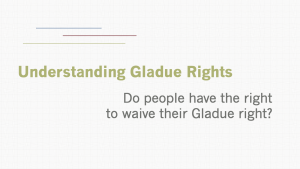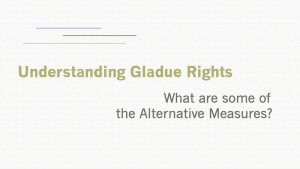
The Cree communities of Eeyou-Istchee receive itinerant court services within the Abitibi judicial district of Quebec. In all communities, itinerant courts can hear cases under the Court of Quebec including Criminal and Penal Division, Civil Division, Youth Division and Small Claims. In addition, all the the Cree communities can host cases under the Quebec Superior Court including for civil, family and criminal matters. Youth Protection has a number of hearings each year as well through our state-of-the-art video conferencing equipment. The Cree Justice system and facilities are designed as a venue that can host any type of courts or judicial or administrative proceedings. The characteristic circular courtrooms represent the Cree value that justice is about community and is an inclusive process.
This section provides the schedule of upcoming court sessions for each community, as well as resources related to court appearances.

A jury is a group of citizens called upon to render a verdict. In the context of a criminal trial, the jury is called upon to determine whether the accused is guilty or not guilty.
The jury is composed of twelve jurors.
The jury is presented with the facts, it hears the evidence and testimony from each side and it receives instructions from the judge. At the end of the trial, it must form an opinion and make a decision called the “verdict”. The jury’s verdict must be unanimous.
If the accused is found to be not guilty, he or she is acquitted immediately. If the accused is found to be guilty, he or she receives a sentence determined by the judge, immediately or at a later date.
| >> For more information on the jury process, including informative videos, visit the Quebec Justice website. |

The Cree communities of Eeyou-Istchee receive itinerant court services within the Abitibi judicial district of Quebec. In all communities, itinerant courts can hear cases under the Court of Quebec including Criminal and Penal Division, Civil Division, Youth Division and Small Claims. In addition, all the the Cree communities can host cases under the Quebec Superior Court including for civil, family and criminal matters. Youth Protection has a number of hearings each year as well through our state-of-the-art video conferencing equipment. The Cree Justice system and facilities are designed as a venue that can host any type of courts or judicial or administrative proceedings. The characteristic circular courtrooms represent the Cree value that justice is about community and is an inclusive process.
This section provides the schedule of upcoming court sessions for each community, as well as resources related to court appearances.
For more information on the role of the main courts in the Quebec court system, please consult the Quebec Justice website.
Court Schedule
Court files for our communities are processed by the Direction régionale des services judiciaires du Nord-du-Québec located at 901, 3e Rue Ouest, Amos, Québec, J9T 2T4, telephone (819) 444-5231 or toll free 1-866-226-9860.
The current schedule of upcoming court sessions for each community is found in the colour-coded schedule below.
Please note that court schedules are subject to change by the Government of Quebec so please refer to this page on a regular basis for the most up-to-date information.
| >> 2023-2024 Court Schedule in PDF. |
|
>> Related resources: |
GUIDELINES ON WHAT TO WEAR IN COURT
A court appearance can be a challenging experience, whether you are the accused, the defendant or a witness.
For this occasion, your behavior and wardrobe should demonstrate respect for the court. They should complement your good intentions and not serve as a distraction.
When making an appearance in court, it is important to demonstrate respect, courtesy and restraint, in regard to the judge, the opposing party, the witnesses and the court personnel. Essentially, you may want to present the best version of yourself. This applies also to your wardrobe choices.
The rules of practice of the court provide that every person present in the courtroom must be suitably dressed or suitably attired. The rules of practice do not provide specific examples or clarifications in this regard. However, the following guidelines may be useful:
- When dressing for court, always wear an outfit that is suitable and appropriate.
- It is important to be discreet and one of the best ways to do so is to wear business attire and more modest and neutral clothing and colours.
- Wear clothes that make you feel and look comfortable.
- Make sure that your clothes are free of rips, stains and wrinkles.
- You may wear what you would wear for a job interview or to a wedding or church.
- Women may wear a skirt but the length should be reasonable and not too short.
- Consider a conservative haircut or hairstyle.
- Clothing that is extravagant, flashy, overly informal or distracting is usually considered inappropriate.
Examples of clothing that may be considered inappropriate or extravagant include:
- Necklines that are too exposed, fitted camisoles and skirts that are too short.
- Shorts, sandals, shirts that are too short, helmets, hats, caps and sunglasses.
In doubt, always err on the side of caution. Keep in mind that, it is preferable if the judge or jury focus on the legal facts and your story rather than your outfit.
Other rules of conduct in the courtroom worth mentioning include:
- Arrive on time, and remain calm under all circumstances.
- Turn off cell phones, pagers and other distracting electronic devices before entering the courtroom.
- Do not bring any food or drinks in the courtroom.
- Never chew gum.
- Remove helmet, hat, cap and sunglasses.
- Stand up when the judge enters and leaves the courtroom.
- Rise and remain standing when addressing the court.
- Do not use a cameras or cell phone to take pictures or videos when the court is in session.



















